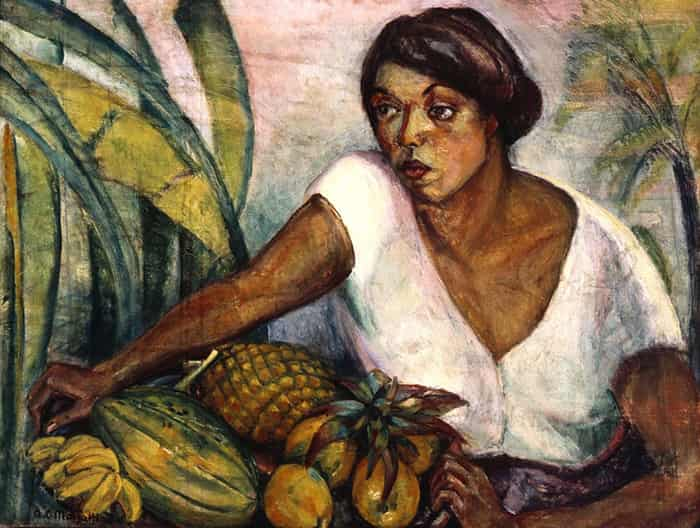223
OLFA SENIOR ONE ART AND DESIGN Introduction The Art and design curriculum aims to; develop creativity, visual communication, understanding culture, …
OLFA SENIOR ONE ART AND DESIGN
Introduction The Art and design curriculum aims to; develop creativity, visual communication, understanding culture, and connections to society. This course is prepared for learners of Senior One and it is based on the interweaving seven learning art units within the syllabus. These are; Drawing and Painting, Graphic Design, Decorative Arts, Fabric Arts and Printmaking, Three -dimensional Art, Integrated Crafts Projects, and Art Theory. The learning experiences is segmented and planned to unfold in two complimentary domains of; Art Making and Art Response. Art making is the practical application of skills (selection and control of materials, media and processes) while art response is a theoretical recalling, understanding and communicating knowledge in a clear and coherent manner. Each unit appears in the four years of Lower Secondary Education in a spiral form. The activities are meant to develop the cognitive and vocational skills of learners to match the 21st century tenets of Critical thinking and problem solving, Creativity, collaboration, and communication. Aims and objectives The Art and Design program of study intends to enable students to develop:
The Art and Design program of study intends to enable students to develop:
- Basic knowledge about the different areas/disciplines of Art and Design e.g. pottery, sculpture, weaving, printing, modeling and fabric decoration.
- An understanding and appreciation of their immediate environment as a source of materials for Art and safety and healthy living.
- Practicing simple artistic and creative techniques.
- Developing a language for expressing ideas, feelings, emotions and moods through a variety of art experiences (creative growth).
- intellectual, imaginative, creative and intuitive capabilities Learning the proper use of tools, equipment and materials. Understanding and appreciating works of Art (natural and man-
- an awareness of different roles, functions, audiences and consumers of art, craft and design.
- Seeing the usefulness of art in other subject areas.
- knowledge and understanding of art, craft, design and media and technologies in contemporary and past societies and cultures
- Opportunity to use the knowledge, understanding and skills developed in previous units to identify research and produce personal art works and projects, developing interest for future vocation in Art for self and national development.
- develop the appreciation of Art as a subject, the environment and the timelines in artistic developments.
- interpret meaning and appreciate the value of art and design.
- analyze and discuss how the natural environment influences art and human living.
- place artworks in a historical context and write about works of art.
- analyze and discuss the major art movements and periods.
- demonstrate understanding of art styles and art language.
- integrate art history concepts into their own artworks.
- demonstrate basic vocabulary in art criticism.

 The learner will develop knowledge, skills and understanding by:
The learner will develop knowledge, skills and understanding by:
- identifying the elements and principles of art.
- making use of art vocabulary relating to the drawing and painting.
- experimenting with different methods and media of drawing and painting,
- integrating the elements and principles of art in his/her works.
 The learner will:
The learner will:
- acquire knowledge in basic graphic design.
- develop literacy concepts into graphical form.
- investigate and integrate principles of graphic design in their works
- identify the elements and principles of design, employing art vocabulary and integrating the elements and principles within their work.
- analyze and discuss artworks depicting graphic concepts.
- demonstrate understanding of the role of graphic design in the society.
 The learner will:
The learner will:
- develop their knowledge in decorative arts.
- develop skills by creating decorative artworks based on studies from the environment.
- research, discuss and write about the Ugandan cultural features and their significance.
- integrate traditional and contemporary art elements in their work.
 The learner will:
The learner will:
- create artworks based on understanding of the fabric decorations and print making.
- integrate traditional and contemporary techniques of fabric decoration into his/her work.
- create images through various techniques of printmaking.
- experiment with different materials in their work.

- Acquire understanding of the properties of different materials used in 3-D Art making.
- Create original works with a variety of materials in 3D Art making techniques.
- Investigate creative use of sculpture and pottery techniques
- Analyze and discuss the artworks of master and contemporary 3D artists.
- investigate and generate ideas for making art informed by their understanding of the natural, material and cultural environment.
- investigate and describe objects and their function in everyday life and in their social contexts.
- make art works depicting African (Ugandan) symbolism and cultural environment.
- describe integrated crafts /multi- media skills in the social, economic and cultural context.
Course Currilcum
- APPRECIATION OF ART AND DESIGN Details FREE 00:00:00
- EXPLORING SPACE, LINE AND SHAPE Details FREE 00:00:00
- EXPLORING THE NATURAL ENVIRONMENT Details FREE 00:00:00
- INTRODUCTION TO GRAPHICS Details FREE 00:00:00
- MULTI MEDIA: MOSAIC/COLLAGE Details FREE 00:00:00
- INTRODUCTION TO FABRIC DECORATION AND PRINTMAKING Details FREE 00:00:00
- INTRODUCTION TO POETTRY Details FREE 00:00:00
- CRAFTS FROM THE NATURAL ENVIRONMENT: BASKETRY I Details FREE 00:00:00
- Ancient Art PRE-HISTORIC ROCK ART OF THE PALEOLITHIC PERIODS Details 1 year
- This unit is about Ancient Art PRE-HISTORIC ROCK ART OF THE PALEOLITHIC PERIODS
- ANCIENT EGYPTIAN ART Details FREE 00:00:00


